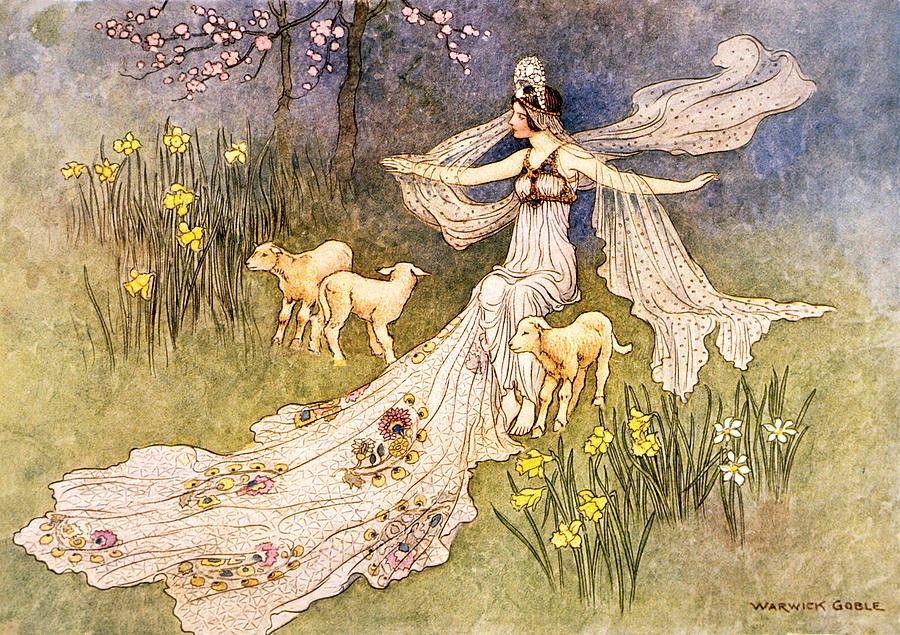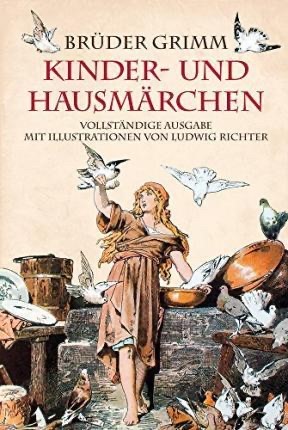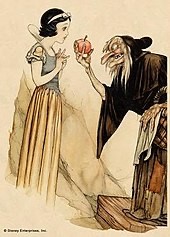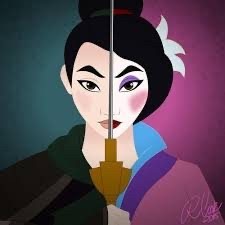In the words of Goldilocks: this article is ‘just right’
Glass slippers, impossibly long hair and spindle wheels that put you to sleep: all elements of a fairy tale, and as I would argue, one of the most powerful forms of literature across the globe. I wrote this article in order to explore and share my love for fairy tales, fostered through years of begging my parents for story time, and Disney filling my mind with the magic and colour I could only dream of in ‘sunny’ Bolton. Enjoy the rich history behind your favourite stories, since there might be more to it than you think…
Let’s rewind to before the clock struck twelve
The name ‘fairy tale’ actually comes from the french ‘conte de fées’, first coined by Madame d’Aulnoy in the late 17th century, although the concept of the stories themselves has been around for much longer. It’s difficult to track the history of these tales, since they have evolved both orally and through written extracts, but looking back only those written down have been saved for us to see. The oldest forms of these include ‘the Golden Ass’ written in Rome in 100-200 AD and the ‘Panchatantra’ from India in around the 3rd century BC. Looking at these through a modern lens however, it’s difficult to classify them as it is unknown to what extent they reflect the actual folk tales even of their own time, as well as them not necessarily including the same features we would associate with the fairy tales we know today.

Some of the first collectors attempting to preserve the plot, characters and style of the orally transmitted folklore that fairy tales were born from were the Brothers Grimm, German academics, linguists and authors who specialised in collecting and publishing folklore during the 19th century. Jacob and Wilhelm Grimm worked in a library in Kassel where they had ample time to compile stories that they had picked up from those they knew.

Their original fairy tales were published in 1812 ‘Kinder und Hausmärchen’ (children’s and household tales) with the first edition containing 86 stories and the second, published in 1815, containing 70. The first volumes however, were intensely criticised as although they were named ‘Children’s Tales’, they were not regarded as suitable for children, with their subject matter including violent rape, murder and sacrilegious elements according to religious scholars of the time. So, cheery…
A few rather tasteful examples include Cinderella’s stepsisters cutting off their toes to fit into her shoe, Rapunzel’s Prince being blinded by brambles under the tower and in little red riding hood the friendly neighbourhood woodcutter slicing open the wolf to save the little girl.
In order for the Grimm brothers to make their tales less, for lack of a better word, grim, they both edited and added to their collection of fairy tales, publishing more suitable versions for the children of 19th century society and eventually the children of today.
Something of note however, is that throughout Grimm’s fairy tales anti-Semitic themes run rampant, with Jewish characters being presented as penny pinchers and thieves. This contributed therefore to the Nazi government’s adoption of the Grimms’ tales for propaganda purposes during the Holocaust, claiming for instance that Little Red Riding Hood symbolised the German people suffering at the hands of the Jewish wolf, and that Cinderella’s Aryan purity distinguished her from her mongrel stepsisters. This display is therefore demonstrative of the subliminal power of fairy tales on a large array of people, and the symbolism that can be employed to twist such simple narratives to fit one’s agenda. On a personal level, this can be scary, since in reality do we really know what prejudices we have picked up from the stories of our childhoods?
Are all swans just bullies or…?
Although an essential characteristic of a fairy tale regards the elements of magic and wonder, that magic doesn’t lessen the need for a universal truth throughout these fantastical tales. Fairy tales have been used for thousands of years to teach people, in particular children, how to function in the societies that coined them. Stories such as little red riding hood were made in the hopes that children would avoid the temptations of talking to strangers and alerts them to the dangers of the world in the predators lurking in the shadows.
I will say without shame that the witch from Snow White was a key player in my refusal to answer the front door until I was of an embarrassing age and she still terrifies me to this day. I think it’s the nose wart that seals the deal.

In all seriousness, child psychologist Sally Goddard Blythe has articulated that fairy tales give ‘form to deep fears and dreams about life through fantasy’ to children, allowing them to understand complex and difficult feelings in a world that isn’t their own. Stories such as the ugly duckling, teaching not to judge people by appearance, and Pinocchio, teaching that lying is wrong, provide important life skills that create opportunities for children to become more giving, contributing members of society.
This provides us with a link to the application of fairy tales in the modern day, and the ways in which they are represented differently to children growing up in the age of technology. An example of a huge difference in the portrayal of fairy tales with the introduction of technology regards the stories being made into films, with the oldest feature length film ever made by Walt Disney being a depiction of ‘Snow White and the Seven Dwarves’ in 1937.
Mirror, mirror on the wall let’s leave the princes at the ball

Since then countless Disney films have been made, covering most of the well known tales popularised in Europe over the past few centuries, with the presentation of the heroine princess featuring in the majority. As society has developed however, the traditional portrayal of the damsel in distress role has been somewhat cast to the side, with the rise of feminism influencing the fairy tales children are raised on in its own right. An example of this is in the portrayal of Rapunzel in one of my favourite Disney films, Tangled, as her original character’s dependence on the Prince and her stepmother is wholly contrasted by the animated version’s spunky personality and outgoing attitude while still retaining basic elements of the tale. Rapunzel’s skilful wielding of a frying pan was in my opinion an inspiring improvement on the role of the princess character.
Along this vein, although most of the fairy tales dominating American and British media over the past few years have been vastly European, the implementation of diversity in not only the characters featured, but the stories told through film and cartoon has been raised as an issue and is being addressed as new projects are released. The inclusion of more diversity and the championing of women’s rights through strong female characters within these classic tales have been supported by the majority, although debates have been sparked concerning the retention of the originality of fairy tales as they are portrayed on screen and adapted into novels for children today. Although, I will say that diversity hasn’t even come as far as it should have by this point, with inaccurate cultural representation in films such as Aladdin and unrealistic body image depicted through cartoons and projected onto young women.
Some critics have argued that as fairy tales evolve with the progression of society, their history is being marred as they are chopped and changed to fit with our current standards of behaviour. I would refute that notion however, with the argument that fairy tales have never been consistent in the personalities of their characters, nor even necessarily in their story lines, but instead in the motifs they represent when it comes to learning lessons and stimulating children’s minds. There is no ‘original fairy tale’ to preserve, since even the prevalent damsel in distress role is an amalgamation of characters stretching back for centuries on end. These stories are meant to inspire, not to force us into little boxes like propaganda; at least that’s how I see it.
Fairy tales are so important because they allow us to dream, to experience a world entirely different than our own, and in this way spark one of the pillars of story writing to form in children across the world; imagination. Every single human invention is a product of imagination, and fairy tales have wielded the power to elicit that from so many people over so many generations, a fact that sets them apart from other literature and imprints them in the timelines of our lives.
By Ananya Ajit
Sources: Britannica.com/brothersgrimm
bbc.co.uk/fairytales